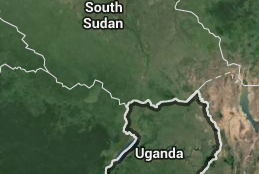There’s a mystery disease ravaging communities in East Africa, and even the world’s best epidemiologists can’t figure out where it’s coming from.
The neurological disease, which was first documented in Uganda in 1950 is suddenly increasingly prevalent in parts of South Sudan, Tanzania and northern Uganda. About 4,000 cases and 500 deaths have been reported in the region since 2003.
Nodding syndrome is characterized by exactly that, in the early stages children begin to nod off, or repetitively drop their head, as though falling asleep. As progression occurs, the nodding becomes more frequent and seizures begin. The mysterious syndrome affects otherwise healthy children between 5-15 years old. So far, no child has ever recovered from the disease.
Cases of the disease range from mild to severe as the children suffer from mental deterioration and a decline in physical capacity over time. Because the uncontrollable seizures prevent children from completing even small tasks, they are unable to attend school and need constant supervision. One of the main characteristics of the syndrome is stunted growth due to malnutrition as eating can precipitate seizures. Many of those affected die of malnutrition or other effects such as opportunistic infections, falling and drowning.
Since 2009, investigators from the Centers for Disease Control and Prevention (CDC) have ruled out over 36 possible causes including water contamination. Specific exposures examined in previous studies include munitions, monkey meat and relief food. What has been found is that there is a significant association to onchocerciasis (river blindness) and that the children lack vitamin B-6. Although there is a strong link to onchocerciasis, it leaves to question why there is an absence of nodding syndrome in other endemic areas.
An interesting finding is the higher prevalence of the syndrome in areas affected by conflict and displacement. Overcrowded refugee camps, some say, may have caused exposure to toxins or contaminated food or water. Now in post war recovery, families have returned home and are faced with the disease, which often afflicts multiple children in a single household. While there is no evidence suggesting chemical agents or other toxic factors, there is a commonality of displacement.
The Government of Uganda recently allocated $2.2 million to address the disease and opened five nodding syndrome wards at health centers in the region. Uganda has sought help from the WHO and the CDC, who are currently working with the ministry of health to determine the cause, preventative measures and treatment of the disease. Typically, epidemiologists can pinpoint the cause of a disease within a few weeks but up to now, there is no known explanation for nodding syndrome.
What is known is that thousands of children have died and thousands of families have had their lives torn apart by this mystery disease.
